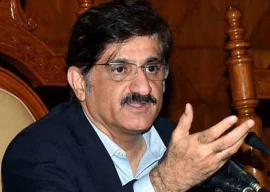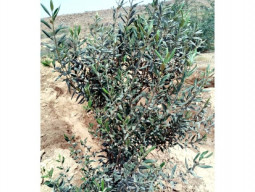
Dispersed across the subcontinent stand these huge rocks and pillars, engraved with messages of moral principles and religious tolerance in the intricate Kharoshti script.
These once grand monuments are King Asoka’s reminders about the welfare of mankind, preserved in rock, from ancient times – 256 to 257 BC – to the present day.
And yet, despite the history, the edicts in Pakistan – spread over three large rocks near Khalabutt Bridge in Mansehra, Khyber-Pakhtunkhwa, and two rocks in Shahbaz Garhi, Mardan – are under serious threat of environmental degradation. They have been ravaged by urbanisation and by the apparent apathy of the Department of Archaeology.
Damaged chronicles
Today, the rocks are placed inside tiny walls, with flimsy shelter overhead. A small metal board reads: Don’t damage the heritage and do not take pictures of them [the rocks].
This message has clearly been ignored.
The shelter cannot even protect the edicts from animals grazing in the fields nearby. There is a thick layer of dust over each, deep scratches that narrate stories of neglect, a drain of waste-water and a garbage dump close by – a far cry from the glorious history of Maharaja Asoka, the king who ended the bloodbath at the time and inscribed laws to nurture and preserve life.
One of the rocks, located near the lower end of the Karakoram Highway, is heavily encroached and extremely scratchy.
Who guards the guards?
Nidaullah Sehrai, the acting director of archaeology department, Peshawar, says that there is, in fact, a security guard to protect and take care of the rocks.
“Besides the guard, the officials of the department concerned in Mansehra occasionally visit the site, too,” he adds firmly.
“Guarding the site for 24 hours a day is not possible for a single guard. It is not just the department’s responsibility, but the entire society’s, to protect their culture and heritage,” he exclaims. “People here don’t think of these edicts as part of their culture and have no desire to protect them!”
Sehrai denies any militant involvement in the digging and damage of the rocks, but does say that a suicide attack near the site damaged a good portion of the edicts.
Unearthed heritage
There are hundreds of archaeological sites in the Hazara division, where most of them have been ruined even before excavation.
Dr Muhammad Zahir, a lecturer at Hazara University’s archaeology department, said that the entire K-P province is rich in heritage but there is a dire need to protect them.
Preservation is under way, but it’s sporadic and slow.
Words without meaning
The edits are carved boldly in the ancient Karoshthi script, characters which very few in the country understand.
“Worthless ceremonies should be changed to fit behaviour of love for all beings, with firm commitments and good deeds, such as observing obedience towards parents, and prohibiting festivals that result in social evils,” declare some of the proclamations.
And yet, these messages cannot be understood by the common man.
In this vein, a crucial reason for deterioration is that the heritage has been left at the mercy of a security guard, who is not a specialist at all.
These edicts are a part of thirty-three inscriptions on pillars of Asoka in four countries – Bangladesh, India, Nepal and Pakistan.
Published in The Express Tribune, September 7th, 2013.
COMMENTS (6)
Comments are moderated and generally will be posted if they are on-topic and not abusive.
For more information, please see our Comments FAQ
1719315628-0/BeFunky-collage-(8)1719315628-0-405x300.webp)


1731329418-0/BeFunky-collage-(39)1731329418-0-165x106.webp)













The tomb of Auranjeb is well preserved in Hindusthan where as his deeds deserved to be graved . The tomb reminds us his mass conversion through Zazia tax on non muslims . We stili bearing it while demolished the Babari Dhancha without any hesitation to buit a Ram temple there .
ASI is ready to look after the Ashoka sites and ready to reconstruct the statue of lord Buddha at Bamiyan but for that sake militancy has to be uprooted first .
why should we preserve indian culture when we belong to arab stock and our culture is arab culture
A matter of shame for both Ind and Pak that we are not able to safeguard our rich heritage . We are failing in our duty to bequeath these things to our children . I often wonder - would it have been the same situation if we had never split seven decades back. Perhaps not , we would have been more mature then.
"People here don’t think of these edicts as part of their culture and have no desire to protect them!" -Here lies the crux of the matter. When Pakistanis have their cultural roots in Arabia. They are least bothered by their own forefathers glory.
As Ashoka pillars head is Indian emblem. Why Indian should not come forward to finance these sites. They can also become autofinanced if Indians ar allowed to visit them in safe conditions- somewhat like nankana sahib for sikhs. Pakistani goverment should open doors for alternate ways rather than expecting cash-strapped govt departments to manage them. It will ensure protection at least till awareness spread or the operation becomes auto-financed.
Credit to cover these rocks to my grandfather on whose request they were covered in Mansehra. It happened when KKH was being build and the rocks used to hit them after the blasting.
And it's Butt Pull (Bridge), named after Major Butt who died on duty during the construction of the bridge.
King Asoka Bin Khokha, the first Arab to invade and rule India.